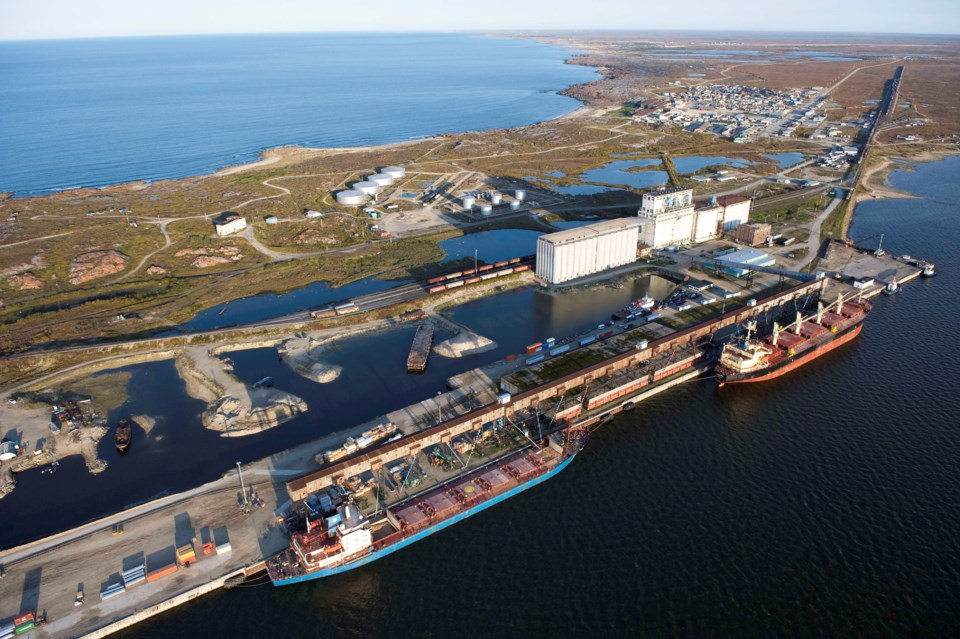The closure of the Port of Churchill, at Churchill, Manitoba was shocking, but not unexpected, nor unlikely. Canada’s sole northern port has limped along, basically, forever.
Yet that does not mean it should closed for good and be abandoned.
Back in 2013, when the oil boom was in full swing and the price of oil traded between US$110 and US$91 a barrel (mostly in the US$90s), production was growing everywhere and pipelines were full. Crude-by-rail facilities were popping up all over the prairies especially in North Dakota, where the majority of their oil, for a time, would find its way to rail.
Crude-by-rail, while substantially more expensive, had one major benefit – it dramatically opened up markets for oil producers. Instead of being limited to just where the limited pipeline network allowed, a shipment could go anywhere the tracks led, meaning almost anywhere on the continent. This meant American Bakken crude started finding its way to places like Saint John, N.B., and the U.S. eastern seaboard refineries, displacing crude from places like Saudi Arabia.
Now consider the Port of Churchill which was sold by the federal government in 1997 to U.S.-based Omnitrax, in combination with the CN rail line leading to Churchill. As is evident with its closure now, Churchill hasn’t been doing too well since the end of the Canadian Wheat Board monopoly.
There were some noises a few years ago out of Churchill that they were looking at shipping oil from our sole Hudson Bay port. The port was initially looking to ship a pilot shipment in late 2013 or, failing that, in 2014. They were aiming for 10 tankers per year servicing the port if it should work out.
That oil would leave via Hudson Bay, a water body nearly the size of the Gulf of Mexico, then travel through the Hudson Strait and along the iceberg-strewn Labrador coast to points overseas. Whereas the Gulf of Mexico is teaming with all sorts of traffic, a tanker floating in the middle of Hudson Bay would almost certainly be the only vessel of significant size in the entire bay. Perhaps one grain bulker might pass by. That’s it.
Churchill is, by far, the closest deepwater port to the phenomenally successful North Dakota oilfields. North Dakota went from 90,000 barrels per day around 2009 to 1.2 million barrels per day by 2015. Quite literally, it’s all downhill from North Dakota to Churchill, with no mountains to cross. That means loaded trains get the benefit of gravity, and running uphill on the return trip, the trains are empty. From a rail perspective, it’s much easier than crossing the Rockies or the Appalachians.
Churchill, formerly a major military installation during the Cold War, had a substantial 250,000-barrel tank farm, of which 200,000 could be used for exports. Eighty car unit trains would ship approximately 48,000 barrels each to the port for eventual export.
Proponents began doing community consultations, and were very quickly shot down. This was in the immediate aftermath of the Lac-Mégantic tragedy and the height of anti-Keystone XL rhetoric. The possibility of an oil spill in the tundra of northern Manitoba, where the tracks ran across muskeg territory, was unnerving. They heard a resounding “NO!” and the plan was killed.
While crude-by-rail was a major concern, I pointed out in a column that the vast Hudson Bay and Hudson Strait has essentially no other boats or ships floating in it, except for maybe one or two grain freighters at any one time. There’s no ability or infrastructure whatsoever to respond to any sort of spill. When the Deepwater Horizon spill occurred, hundreds of boats and ships could be rallied. If something happened in Hudson Bay, there is nothing that could respond except for the two tugs based in Churchill (my stepdad used to be a deckhand on one back in the 1970s).
Now the port has closed due to declining grain shipments. Macleans did an exceptionally good story on the port and its history titled “How Canada abandoned our only Arctic port,” but they missed the role crude-by-rail and oil exports could have played. By adding another 10 ships per year, it would have nearly doubled the usage of the port, which shipped principally grain. Obviously, that would have made a huge difference in the viability of the port and its associated rail line. Perhaps, if oil exports via Churchill had been allowed, the port would not be closed today.
The opportunity may have passed. Crude-by-rail makes economic sense at US$90 per barrel, but absolutely no sense when oil was in the US$30s earlier. So even if Churchill was exporting oil, it would not have made economic sense for much of the past year. It might, however, make sense if oil surpasses US$60 this fall, during the Churchill shipping season.
Some people are calling on the federal government to take back the port. It may have to, so we don’t lose a strategic asset forever. But if it does, for the port to be viable, it will need to handle more than grain. I don’t know why it never became a potash export point, but maybe that’s a possibility. It will likely have to export oil, too.��
I wonder if those opposed to oil exports two years ago would have thought otherwise if they realized then that Churchill would be closed today. Perhaps they might reconsider their opposition, if it means Churchill is to survive.
��
Brian Zinchuk is editor of Pipeline News. He can be reached at [email protected].




